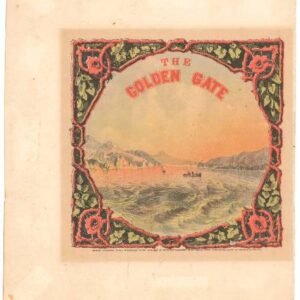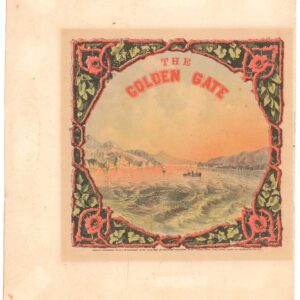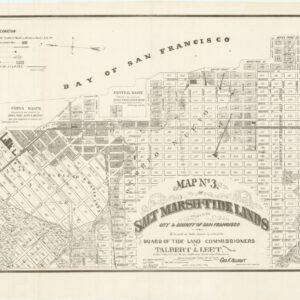A rare gelatin print of a forgotten San Francisco landmark: the Panama-Pacific Expo Racetrack.
[Original Photograph] Golden Gate Thoroughbred Breeders Assn. – P.P.I.E. 1915.
Out of stock
Description
This wonderful and evocative vintage photograph depicts what is today Crissy Field in San Francisco. It was captured in 1915, one of the most critical years in the city’s history. In the image, we are treated to a view of a large coastal race track seemingly intended for horse racing. The fact that the track is equestrian is confirmed not only by the caption at the bottom of the photo (which underscores its use for thoroughbreds) but also by the fuzzy inclusion of galloping riders in the lower left corner of the track.
However, while its primary function may have been equestrian, the track was also used for more modern forms of racing, notably the 1915 American Grand Prix and Vanderbilt Cup Race. This was organized in conjunction with the Panama-Pacific International Exposition and stands as one of the seminal early events in the history of automobile racing.
Two essential things about this photograph must be highlighted. The first is the date. 1915 was the year that San Francisco made its decisive comeback on the international stage following the cataclysmic devastation of the 1906 earthquake. From late February to early December, San Francisco hosted the Panama-Pacific International Exposition, a World Fair celebrating the opening of the Panama Canal. This saw large swathes of the city rebuilt and endowed with new and stunning architecture, the most important survival of which is the Palace of Fine Arts on Lyon Street.
Looking beyond the track itself to the distant urban sprawl of what is today the Marine District, the monumental dome of the Palace of Fine Arts is visible in this photograph. The other massive building visible in the distance is the so-called Tower of Jewels, which constituted the tallest and most prominent building constructed for the PPIE.
Another important aspect of this photo is that it captures a feature of San Francisco that not only was short-lived, existing for only about a year, but has been virtually forgotten since. The race track has been historically neglected in this manner mainly because it was constructed as part of the enormous fairgrounds of the Panama-Pacific International Exposition and thus easily overlooked. Moreover, this area’s extensive rebuilding and reuse (see context section below) has contributed further to its erasure from San Francisco’s established history.
As is evident from our photograph, the Panama-Pacific Race Track was endowed with significant infrastructure, such as extensive fencing and the construction of enormous audience stands visible along the southern side of the track. Remarkably, the low waterfront building in the forefront of the photograph still stands today, confirming our exact location within the broader scope of modern Crissy Field. The building is easily recognizable from its cruciform roof dormers and is what today constitutes the Pacific Coast Federation of Fishermen’s Associations on Marine Drive. Fascinatingly, if one looks at this area of Crissy Field in Google Maps, the kidney-shaped curvature of the 1915 race track remains visible in the layout of the park’s pathways.
This wonderful and evocative image represents a particular and, in many ways, happy time in the history of San Francisco. As an urban feature, it is not just associated with comprehensive urban renewal but also reveals a new paradigm in the planning of American cities, a paradigm in which recreation plays an ever-more important part.
Census
In general, original photographs of more peripheral features of the 1915 Panama Pacific International Exposition are increasingly scarce. Photographs of the race track in function especially so, even though a number of these from the American Grand Prix and Vanderbilt Cup Race are present in institutional databases such as calisphere.org (e.g., https://calisphere.org/item/81e3e043e93cd008e63bcdd125ea631e/).
Despite extensive search efforts, we have not identified any institutional examples of this photograph, making it a rare gem of San Francisco history.
Cartographer(s):
Condition Description
Pasted to a thin board. Minor blemished and wear.
References

![5-sheet set showing San Francisco’s post-1906 earthquake water supply [SF’s first fireboat!]](https://neatlinemaps.com/wp-content/uploads/2022/03/NL-01375-sheet-4_thumbnail-scaled-300x300.jpg)


